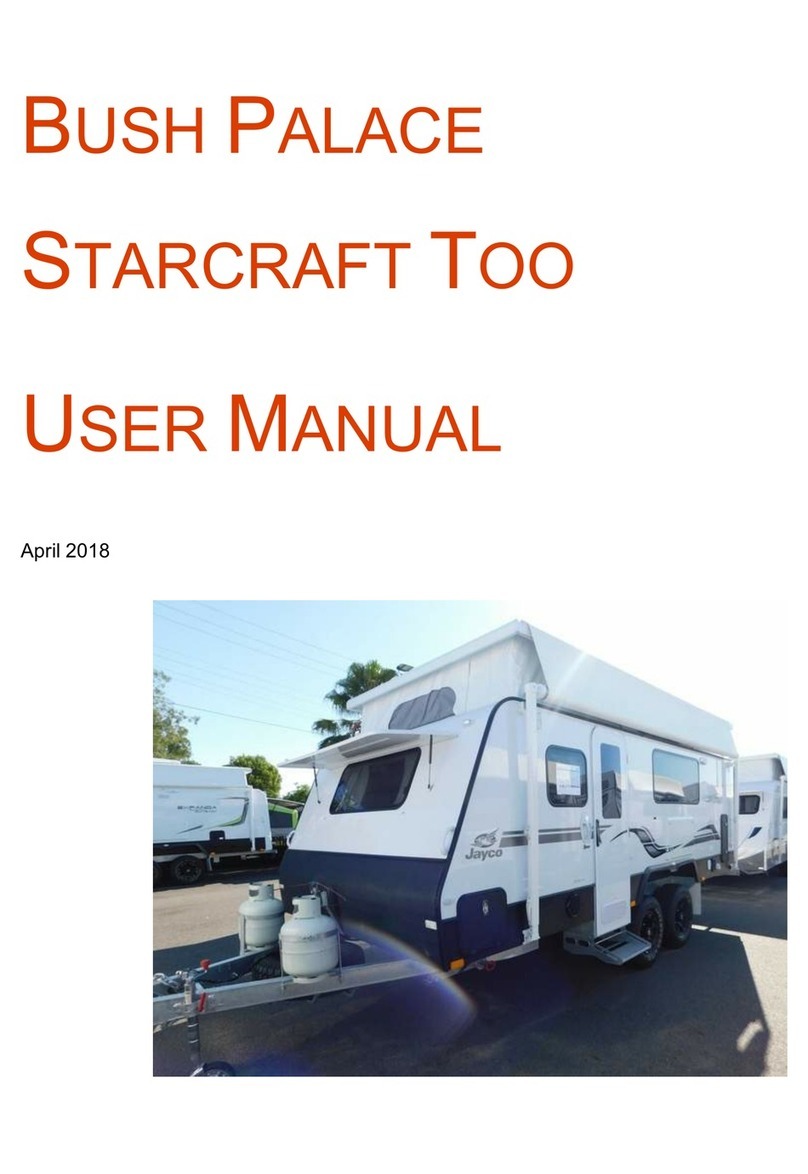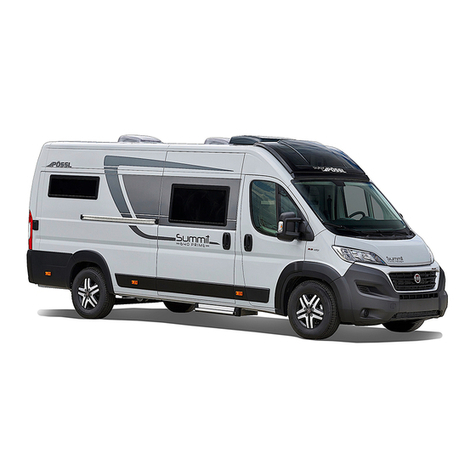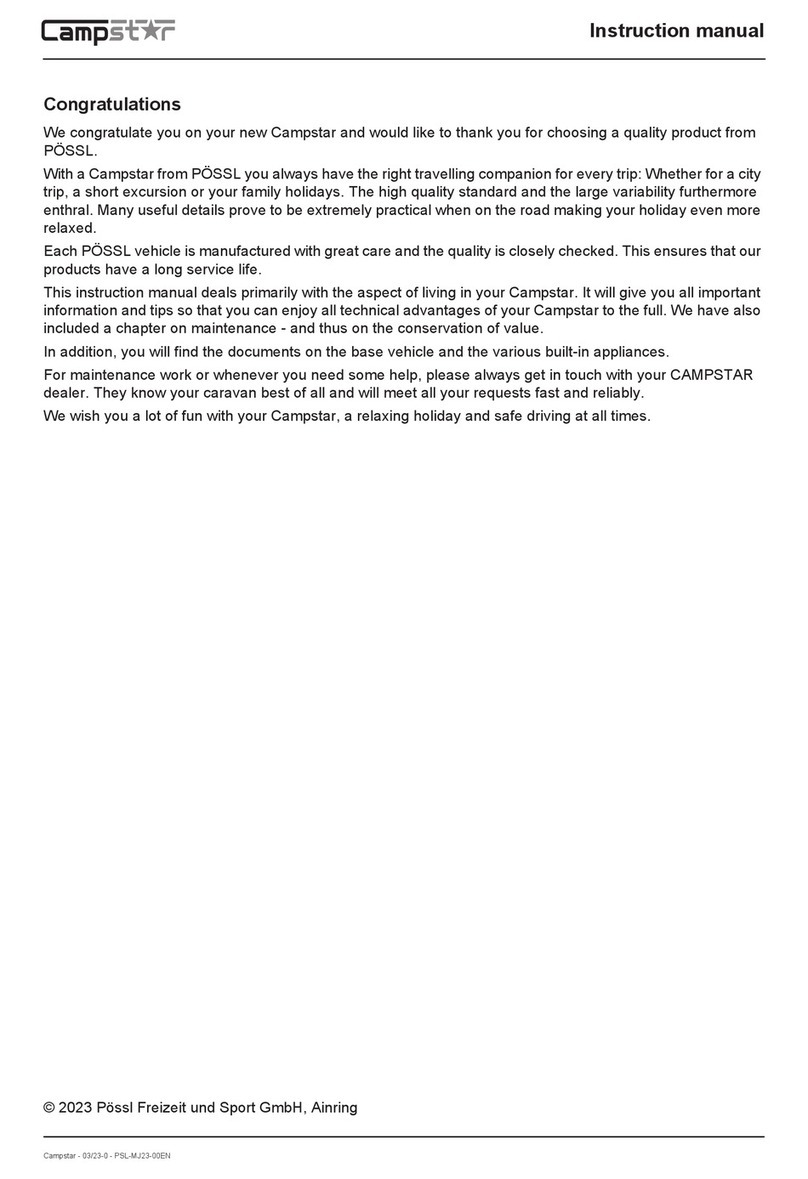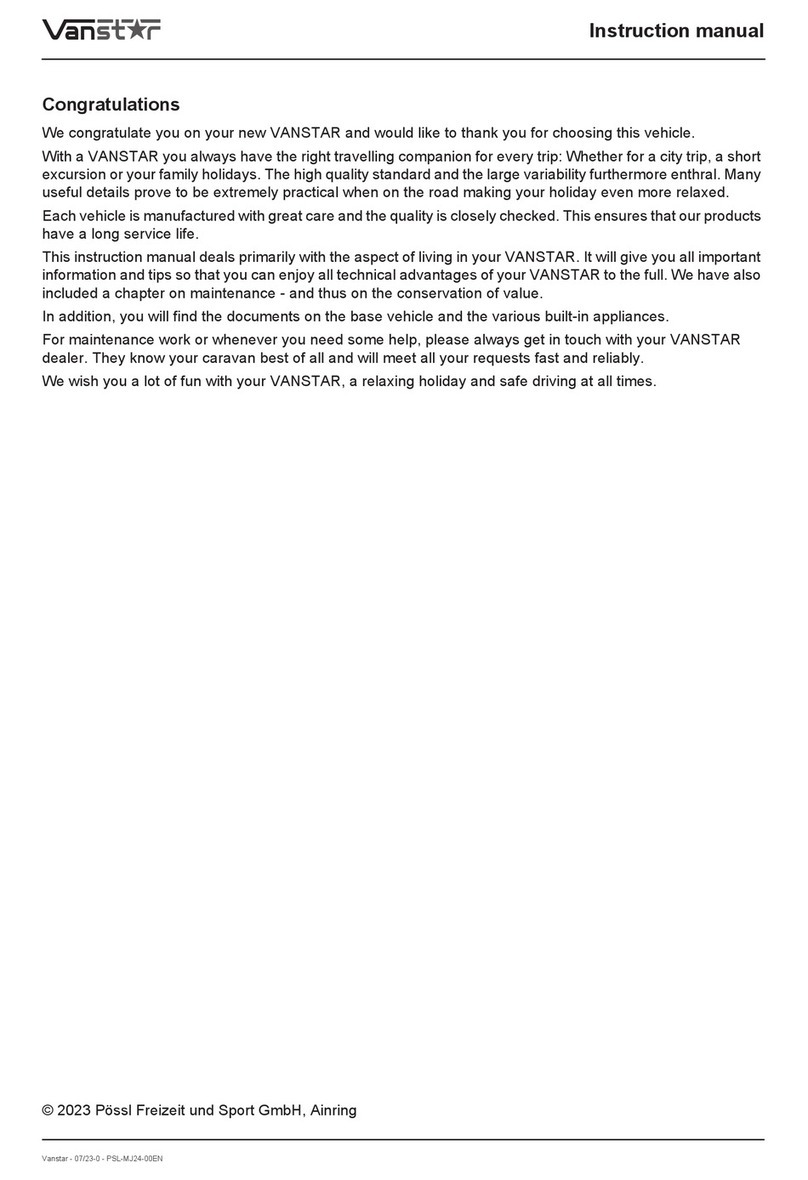1 Records. . . . . . . . . . . . . . . . . . . . . . . 5
1.1 Vehicle document . . . . . . . . . . . . . . . . . 5
1.2 Warranty . . . . . . . . . . . . . . . . . . . . . . . . 5
1.3 Inspection records. . . . . . . . . . . . . . . . . 6
1.4 Inspection plan . . . . . . . . . . . . . . . . . . . 7
2 Introduction. . . . . . . . . . . . . . . . . . . 9
2.1 General . . . . . . . . . . . . . . . . . . . . . . . . 10
2.2 Environmental tips. . . . . . . . . . . . . . . . 10
3 Safety . . . . . . . . . . . . . . . . . . . . . . . . 13
3.1 Fire prevention . . . . . . . . . . . . . . . . . . 13
3.1.1 Avoidance of fire risks . . . . . . . . . . . . . 13
3.1.2 Fire-fighting . . . . . . . . . . . . . . . . . . . . . 13
3.1.3 In case of fire. . . . . . . . . . . . . . . . . . . . 13
3.2 General . . . . . . . . . . . . . . . . . . . . . . . . 13
3.3 Road safety. . . . . . . . . . . . . . . . . . . . . 14
3.4 Towing. . . . . . . . . . . . . . . . . . . . . . . . . 15
3.5 Gas system . . . . . . . . . . . . . . . . . . . . . 15
3.5.1 General information. . . . . . . . . . . . . . . 15
3.5.2 Gas bottles . . . . . . . . . . . . . . . . . . . . . 17
3.6 Electrical system . . . . . . . . . . . . . . . . . 17
3.7 Water system . . . . . . . . . . . . . . . . . . . 17
4 Before the journey . . . . . . . . . . . 19
4.1 Payload . . . . . . . . . . . . . . . . . . . . . . . . 19
4.1.1 Terms . . . . . . . . . . . . . . . . . . . . . . . . . 19
4.1.2 Calculating the payload. . . . . . . . . . . . 20
4.1.3 Loading the vehicle correctly. . . . . . . . 21
4.2 Entrance step . . . . . . . . . . . . . . . . . . . 22
4.2.1 Electrically operated entrance step . . . 22
4.3 Television . . . . . . . . . . . . . . . . . . . . . . 22
4.4 Road safety. . . . . . . . . . . . . . . . . . . . . 23
5 During the journey . . . . . . . . . . . 25
5.1 Driving the motorhome . . . . . . . . . . . . 25
5.2 Driving speed . . . . . . . . . . . . . . . . . . . 25
5.3 Seat belts . . . . . . . . . . . . . . . . . . . . . . 26
5.3.1 Using the safety belt correctly . . . . . . . 26
5.4 Driver's seat and front passenger's
seat . . . . . . . . . . . . . . . . . . . . . . . . . . . 26
5.4.1 Seats (Aguti) . . . . . . . . . . . . . . . . . . . . 27
5.4.2 Seats (ISRI). . . . . . . . . . . . . . . . . . . . . 28
5.5 Seating arrangement. . . . . . . . . . . . . . 29
5.6 External doors. . . . . . . . . . . . . . . . . . . 29
5.7 Filling up with diesel . . . . . . . . . . . . . . 30
6 Pitching the motorhome . . . . . 31
6.1 Handbrake. . . . . . . . . . . . . . . . . . . . . . 31
6.2 Entrance step . . . . . . . . . . . . . . . . . . . 31
6.3 230 V connection . . . . . . . . . . . . . . . . 31
6.4 Refrigerator . . . . . . . . . . . . . . . . . . . . . 31
6.4.1 Absorption refrigerator . . . . . . . . . . . . 31
6.4.2 Compressor refrigerator . . . . . . . . . . . 31
7 Living . . . . . . . . . . . . . . . . . . . . . . . . 33
7.1 External flaps . . . . . . . . . . . . . . . . . . . . 33
7.1.1 Flap for 230 V connection, square. . . . 33
7.1.2 External flap Thetford cassette . . . . . . 34
7.1.3 Cap for the fresh water filler neck . . . . 34
7.2 Ventilation . . . . . . . . . . . . . . . . . . . . . . 35
7.3 Windows . . . . . . . . . . . . . . . . . . . . . . . 35
7.3.1 Hinged window with rotary hinges . . . . 36
7.3.2 Hinged window with automatic hinges. 38
7.3.3 Sliding window without lock . . . . . . . . . 39
7.3.4 Blind and roller insect screen. . . . . . . . 40
7.3.5 Roman shades for driver's window
and front passenger's window . . . . . . . 40
7.3.6 Blind for the windscreen . . . . . . . . . . . 41
7.4 Skylights . . . . . . . . . . . . . . . . . . . . . . . 41
7.4.1 Skylight with snap latch . . . . . . . . . . . . 42
7.4.2 Hinged skylight . . . . . . . . . . . . . . . . . . 42
7.4.3 Wind-up skylight . . . . . . . . . . . . . . . . . 44
7.4.4 Multifunction skylight . . . . . . . . . . . . . . 45
7.5 Rotating the seats . . . . . . . . . . . . . . . . 46
7.6 Bench seat. . . . . . . . . . . . . . . . . . . . . . 47
7.7 Tables . . . . . . . . . . . . . . . . . . . . . . . . . 47
7.7.1 Suspension table with fold-out leg . . . . 47
7.7.2 Suspension table with dismantable
support leg . . . . . . . . . . . . . . . . . . . . . . 48
7.7.3 Fixed table of the rear seating group . . 50
7.7.4 Swivel table . . . . . . . . . . . . . . . . . . . . . 51
7.7.5 Folding table . . . . . . . . . . . . . . . . . . . . 52
7.8 Lamps . . . . . . . . . . . . . . . . . . . . . . . . . 52
7.8.1 Halogen spotlight (movable) . . . . . . . . 53
7.8.2 Halogen spotlight . . . . . . . . . . . . . . . . . 53
7.8.3 Lamp in pop-up roof. . . . . . . . . . . . . . . 54
7.9 Beds. . . . . . . . . . . . . . . . . . . . . . . . . . . 54
7.9.1 Fixed bed . . . . . . . . . . . . . . . . . . . . . . . 54
7.9.2 Bed in the pop-up roof . . . . . . . . . . . . . 56
7.10 Converting seating groups for
sleeping . . . . . . . . . . . . . . . . . . . . . . . . 57
7.10.1 Seating group rear . . . . . . . . . . . . . . . . 57
7.10.2 Front seating group . . . . . . . . . . . . . . . 58
7.10.3 Facing seating unit with extension. . . . 59
7.10.4 Front seating group with extension . . . 60
8 Gas system. . . . . . . . . . . . . . . . . . . 61
8.1 General . . . . . . . . . . . . . . . . . . . . . . . . 61
8.2 Gas bottles. . . . . . . . . . . . . . . . . . . . . . 62
8.3 Changing gas bottles . . . . . . . . . . . . . . 63
8.4 Gas isolator taps . . . . . . . . . . . . . . . . . 63
8.5 Hose break guard (crash sensor) . . . . 64
8.6 DuoControl switching facility . . . . . . . . 65






























